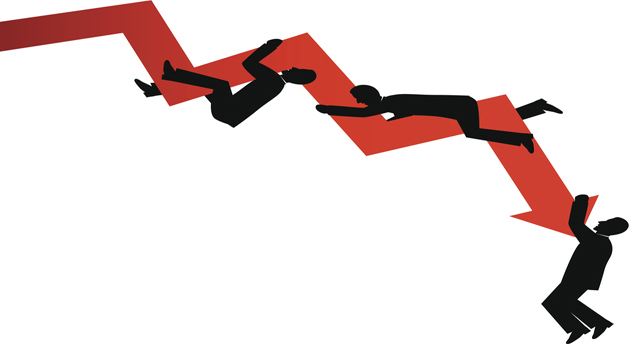
POITOU, FRANCE – “My father told me to plant trees,” said a neighbor last night.
“It was right after I bought this place. Of course, I was young… I was busy… I didn’t have time to plant trees.
“Now, I tell my sons to plant trees while they’re still young. So they can enjoy them later.
“Funny, as you get older, and the less future you have available, the better you know it.”
Closed Book
What follows is a meditation on something we cannot know – tomorrow.
The future is a closed book, insofar as it is possible to know what will happen. But that doesn’t mean the future won’t happen.
And although it is terra incognita – a place you’ve never been before – that doesn’t mean you shouldn’t pack your old familiar toothbrush and a warm sweater; it might be a lot like home.
Aesop wrote his fables. The French have added to them with a few of their own. Here’s one about the future:
Long ago, an old man decided to turn his farm over to his son and his wife.
“I have just one condition,” he told them. “You have to let me stay with you as long as I live.”
This was readily agreed. But the son’s wife and the old man didn’t get along. Finally, the wife persuaded her husband to throw him out. And so he did.
But taking pity on the old man, the younger man turned to his own son: “Go and get a horse blanket for your grandfather so he’ll at least have something warm to wrap around him.”
A few minutes later, the young boy came with a blanket, but his father could see that it was only half a blanket.
“Why did you cut the other half off?” he asked.
“Oh…” replied the boy. “That’s for you when you get old.”
All of a sudden, a pattern came into view. And the future didn’t seem so unknowable.
Like a tall tree, the future casts its shadow backward over the present.
If you think it will rain later in the day, you take an umbrella in the morning. If you think stocks will go up, you buy now. And if you think you have only two years to live, there is no point buying a refrigerator with a 20-year guarantee.
Gift to the Future
The invention of money greatly increased man’s interest in tomorrow.
You could grow tomatoes, sell them for gold coins, and enjoy your harvest years into the future. Or you could borrow the coins now… and pay for them with next year’s tomato crop.
But what if there was a drought next summer? What if you didn’t live through the winter? What if a fungus or a swarm of locusts attacked the crop?
Savings are always a gift to the future. Debt is always a burden on it.
Suppose you were to plant black walnut trees. It could take 50 years before they mature. It will be a gift to your children. But what if a pest kills them?
What if people no longer want natural wood a half-century ahead? What if you borrowed the money to plant them?
The further ahead you look, the more risks you can’t see. Logically, the farther out you go, the more you are likely to run into something that will upset your plans.
So the longer term the debt… the less likely you are to be paid back.
Logically, too, the more debt there is outstanding, the more likely that some will never be paid back.
Treacherous Path
Which brings us back from the future…
And there, in front of us, is the heaviest ton of bricks the future has ever had to shoulder – nearly $20 trillion of U.S. government promises, not counting the roughly $200 trillion of off-the-books obligations.
No one seems to be worried about it. The stock market is going through one of the periods of lowest “volatility” – price swings – ever recorded. Stocks are hitting record highs… and interest rates are still at epic lows.
But ahead, the path – poorly lit and strewn with rocks and banana peels – is treacherous. Somewhere in mid-September, for example, lies a major trap – a debt “ceiling” Congress imposed on itself.
But it’s not just the feds who face obstacles
Consumer debt to disposable personal income is at an all-time high. Mortgage payment to disposable personal income is also at an all-time high.
Over in the auto sector, used car prices – the chassis on which auto credit rests – are losing their bolts. Subprime auto defaults are already soaring. Bloomberg:
It’s classic subprime: hasty loans, rapid defaults, and, at times, outright fraud.
Only this isn’t the U.S. housing market circa 2007. It’s the U.S. auto industry circa 2017.
A decade after the mortgage debacle, the financial industry has embraced another type of subprime debt: auto loans. And, like last time, the risks are spreading as they’re bundled into securities for investors worldwide.
Student debt, meanwhile, has doubled since 2009; it now totes to $1.4 trillion.
What kind of way is this to treat them? Alas, the future has cast a dark shadow over America’s young people.
And according to a study by the New York Fed, student debt is having consequences far beyond just transferring wealth from young people to the old cronies in the education sector.
It’s undermining America’s most important industry: housing.
How so?
Burdened with student debt, young people cannot afford to buy houses. This leaves the bottom rung of the housing ladder unoccupied.
There are starter homes available but few solvent starters to take them… which makes the whole housing market weak and vulnerable.
August, September, October… shadows lengthen. Someone stumbles.
More to come…
Regards,
![]()
Bill
Category: Economics

